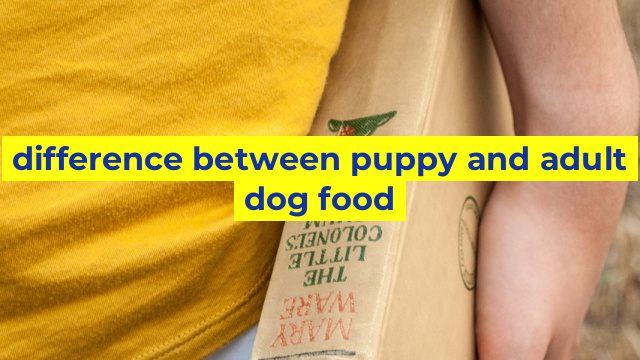Understanding the Difference Between Puppy and Adult Dog Food
When it comes to feeding our furry friends, it’s important to understand the difference between puppy and adult dog food. Puppies have different nutritional needs than adult dogs, and feeding them the wrong type of food can have negative consequences for their health.
Nutritional Requirements for Puppies
Puppies have higher energy needs than adult dogs because they are growing and developing. As a result, puppy food needs to be higher in calories, protein, and fat to support their growth and development. Puppies also require more vitamins and minerals to support their immune system and overall health.
Puppy food should contain a proper balance of essential fatty acids, such as omega-3 and omega-6, for optimal brain, vision, and immune system development. Additionally, it should be rich in antioxidants, such as vitamin E and C, which help to support a healthy immune system.
Nutritional Requirements for Adult Dogs
Adult dogs have a lower energy requirement than puppies. Their nutritional needs tend to focus more on maintaining their health and preventing disease. Adult dog food should contain a balanced ratio of proteins, carbohydrates, and fats to meet their energy requirements while also providing them with essential nutrients.
Adult dogs require more fiber in their diet to support digestion and maintain a healthy weight. They also need a good balance of vitamins and minerals for strong bones and joints and a healthy immune system.
Key Differences Between Puppy and Adult Dog Food
The main difference between puppy and adult dog food is their nutritional composition. Puppy food is designed to meet the higher energy, protein, and fat requirements of growing puppies. In contrast, adult dog food is formulated to meet their lower energy needs while maintaining their health and wellbeing.
Another difference between puppy and adult dog food is the size of the kibble. Puppy food is typically made into smaller kibble sizes to make it easier for them to eat and digest. Adult dogs get larger kibbles that take more effort to chew and promote healthy teeth and gums.
Conclusion
Feeding your dog a balanced diet is crucial for their overall health and wellbeing. Understanding the difference between puppy and adult dog food is important, as it allows you to provide your furry friend with the appropriate nutrients for their specific life stage.
Just as you would seek the advice of your veterinarian when it comes to your pet’s overall health, it’s always a good idea to consult with them on dietary concerns as well to ensure your pet is getting the optimal nutrition for their growth, development and overall health.
Table difference between puppy and adult dog food
| Feature | Puppy Food | Adult Dog Food |
|---|---|---|
| Protein Content | Higher (25-30%) | Lower (18-25%) |
| Fat Content | Higher (8-12%) | Lower (5-8%) |
| Calorie Content | Higher (due to growth and energy requirements) | Lower (due to reduced activity levels) |
| Calcium to Phosphorus Ratio | 1:1 to 1.3:1 (for bone development) | 1:1 to 2:1 (for bone maintenance) |
| DHA and Omega-3 Fatty Acids | Higher (for brain and eye development) | Lower (for maintenance) |
| Feeding Schedule | 3-4 meals per day (due to smaller stomachs and higher energy needs) | 1-2 meals per day (due to lower energy needs) |
